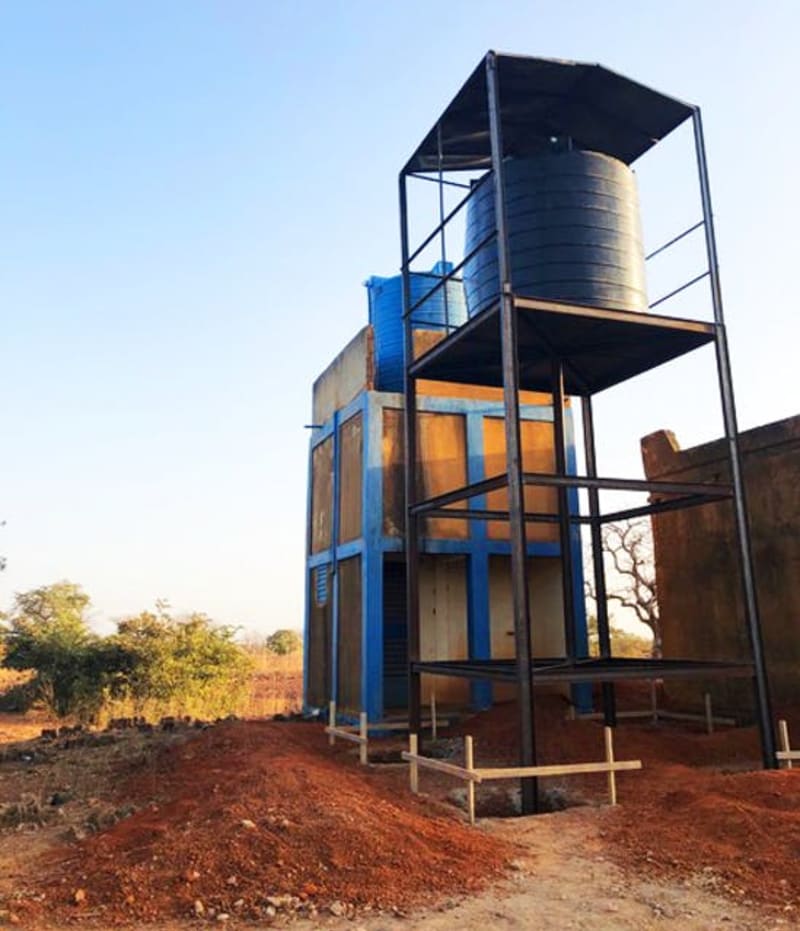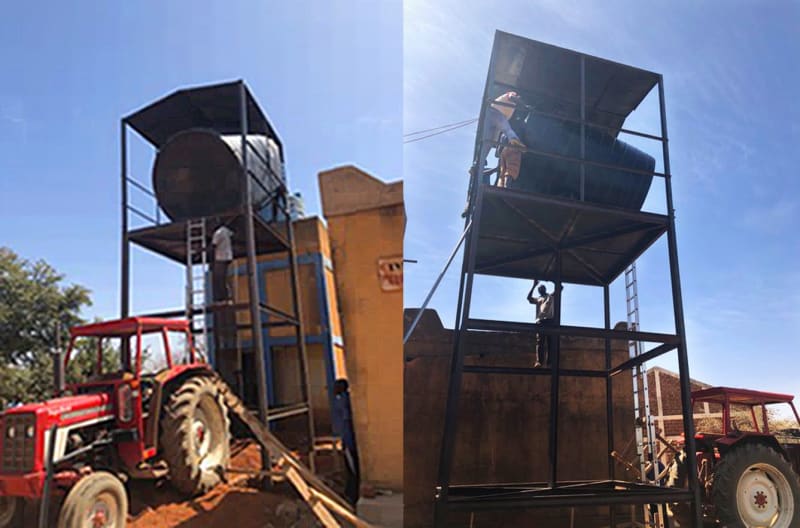
Water in the desert
There is no life without water. There is no water in the desert. Or...?
Living in a country of rivers and rain, we tend to look at places like Sahara and northern Sahel as basically uninhabitable. But there is always water somewhere – deep down. In Nakamtenga, the old well has never dried out. And as long as the big plastic tank up in the air is full, the health clinic and the school and all other activities in the Yennenga programme are guaranteed.
But furthermore, the water tower is the heart for all villagers, the year around. During the dry season, when most small wells in the area run out of water, more and more families in a growing radius depend on the drilled hole. They arrive on bikes with big jerricans on the back, they come walking with donkeys pulling small carriages.
However – and this is a big however – the water supply does not function without a pump which keeps refilling the tank. If the pump stops, the tank can become emptied in ten minutes when people only have the Nakamtenga tower as their source of water.
Electricity in a rural area is most unreliable. The water pump, like other instruments in the village, depends on solar panels. But today, the old solar driven machinery for the pump also frequently stalls. In order not to jeopardize e.g. vegetable gardens or the health clinic, the local project management may soon face the dilemma of having to ration water, to refuse people to fill their tanks.
Instead, Yennenga a few months ago launched a Christmas campaign with the aim of erecting a second water tower, with modern and more reliable solar energy equipment. The budget was 150 000 Swedish crowns (roughly 15 000 euro). And – just look at the photos: A few volunteers managed to wrench the tank up on the old village tractor roof, they then attached strings to a small pickup car which hoisted it up on its stage.
Yennenga Progress extends its warmest gratitude to those who (so fast!) made this crucial investment possible – several private donors and the two companies Dahl Agenturer and Iterio. Since we managed to connect two towers and one bore hole with the new equipment, the installment actually became cheaper than what we first expected.
When the dry (and this means DRY!) season is about to arrive in March, two water tanks standing next to each other will hopefully be constantly refilled by the sun.
